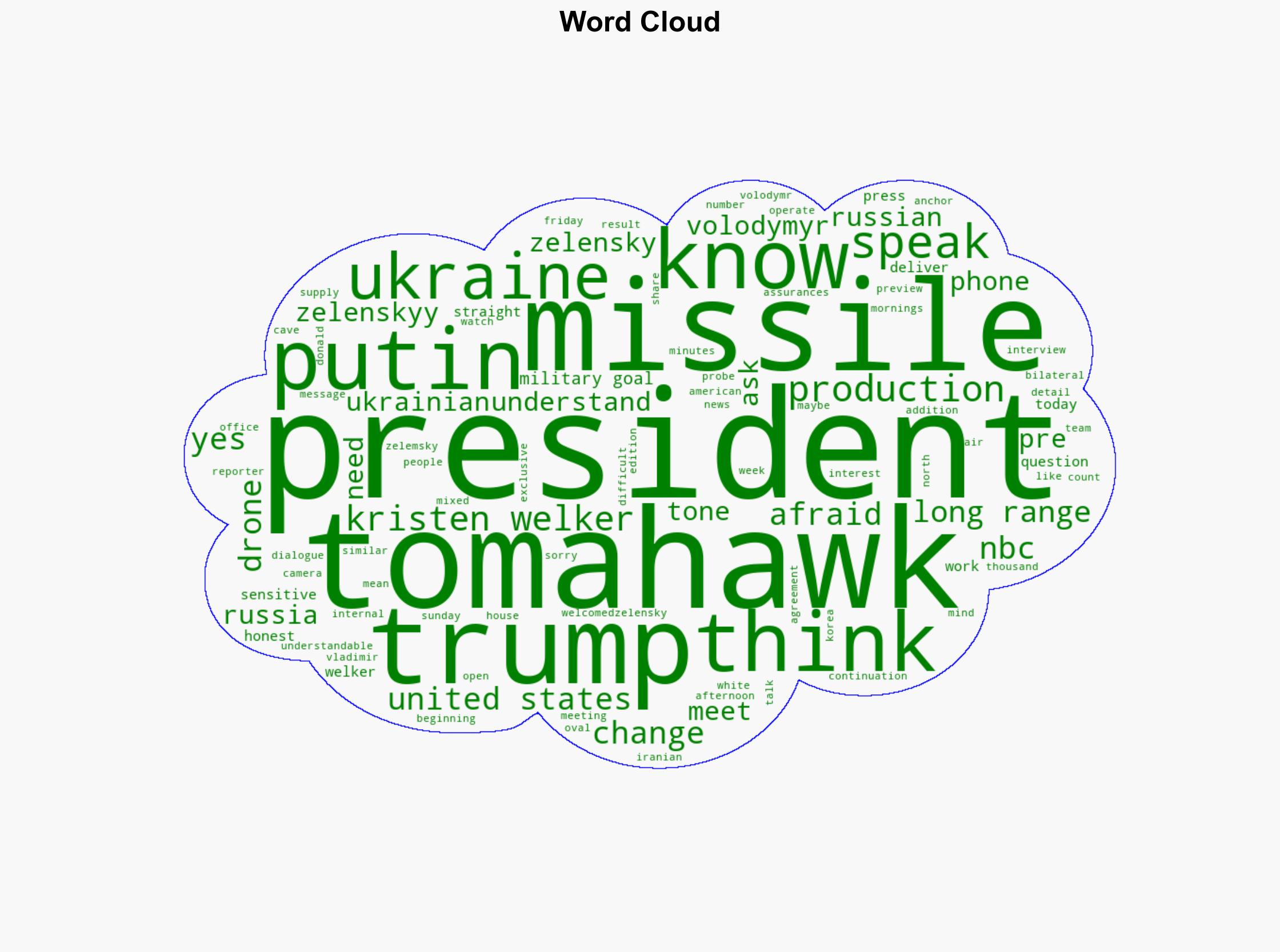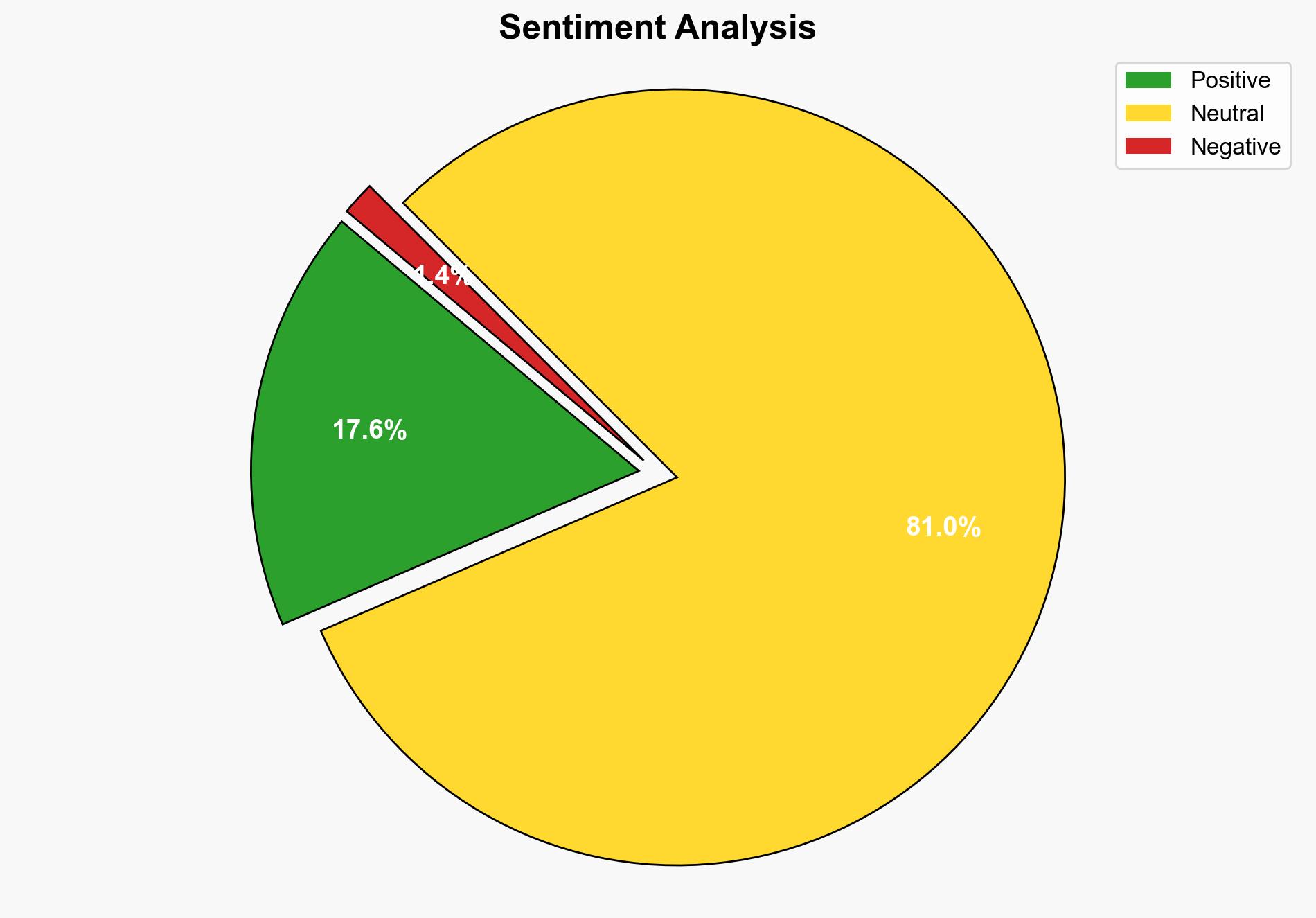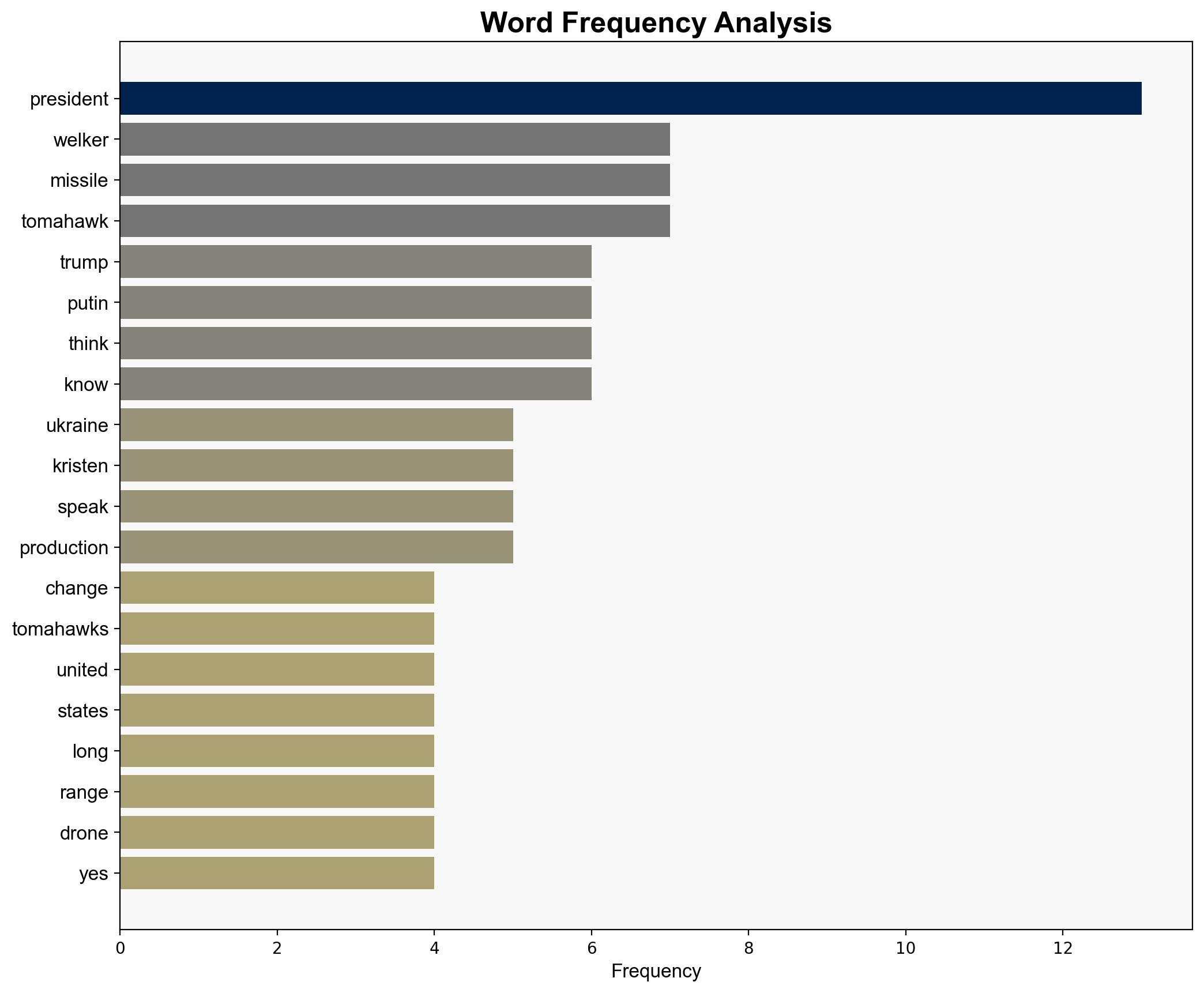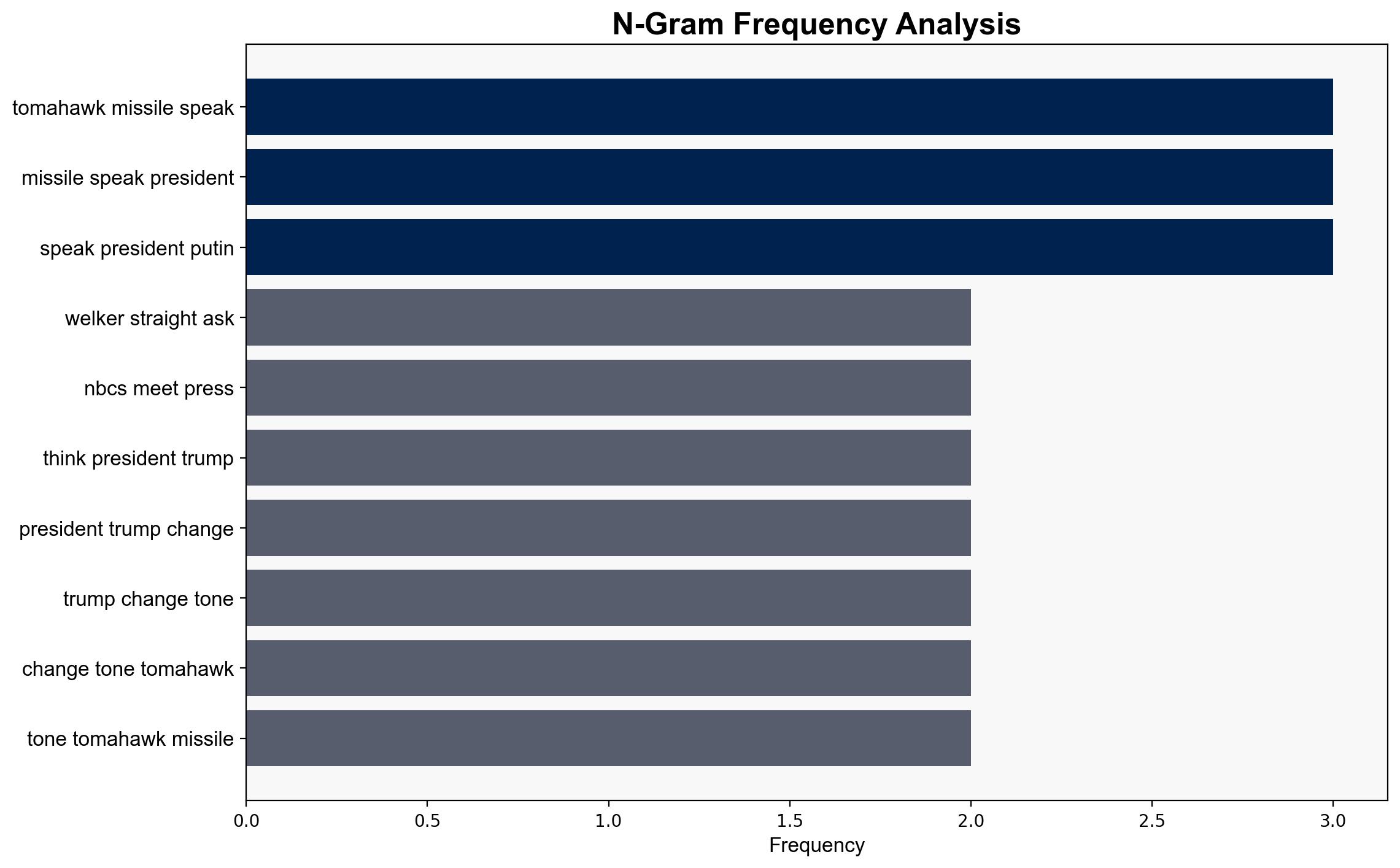NBCs Welker Straight-Up Asks If Trump Caved To Putin On Sending Missiles To Ukraine In Zelensky Exclusive – Mediaite
Published on: 2025-10-18
Intelligence Report: NBCs Welker Straight-Up Asks If Trump Caved To Putin On Sending Missiles To Ukraine In Zelensky Exclusive – Mediaite
1. BLUF (Bottom Line Up Front)
The analysis suggests a moderate confidence level that President Trump’s decision-making regarding military aid to Ukraine, specifically Tomahawk missiles, may have been influenced by conversations with Vladimir Putin. The most supported hypothesis is that geopolitical considerations, including maintaining a diplomatic balance with Russia, played a significant role. It is recommended to closely monitor communications between U.S. and Russian leadership for further insights and to prepare contingency plans for potential shifts in U.S. military support to Ukraine.
2. Competing Hypotheses
1. **Hypothesis A:** President Trump’s decision not to supply Tomahawk missiles to Ukraine was influenced by direct or indirect pressure from Vladimir Putin, aiming to maintain a strategic balance and avoid escalating tensions with Russia.
2. **Hypothesis B:** The decision was based on internal U.S. policy considerations, including strategic military assessments and resource allocation priorities, independent of Russian influence.
Using ACH 2.0, Hypothesis A is better supported due to the timing of discussions between Trump and Putin and the sensitive nature of the military aid in question. However, the lack of direct evidence of pressure from Putin leaves room for Hypothesis B.
3. Key Assumptions and Red Flags
– **Assumptions:** It is assumed that Trump’s foreign policy decisions are heavily influenced by geopolitical dynamics involving Russia. Another assumption is that Ukraine’s request for Tomahawks is primarily a defensive measure.
– **Red Flags:** Lack of transparency in communications between Trump and Putin. The absence of explicit statements from Trump regarding the rationale behind withholding missile support.
– **Blind Spots:** Potential undisclosed agreements or understandings between U.S. and Russian leadership that could impact military aid decisions.
4. Implications and Strategic Risks
– **Geopolitical Risks:** A perceived concession to Russian interests could embolden further aggressive actions by Russia in Eastern Europe.
– **Military Risks:** Delayed or reduced military support to Ukraine may weaken its defense capabilities against Russian aggression.
– **Diplomatic Risks:** Strained relations with NATO allies who support increased military aid to Ukraine.
– **Psychological Risks:** Erosion of trust among U.S. allies regarding its commitment to countering Russian influence.
5. Recommendations and Outlook
- Enhance intelligence monitoring of U.S.-Russia diplomatic communications to detect shifts in policy or influence.
- Develop contingency plans for rapid deployment of military aid to Ukraine if the situation escalates.
- Engage with NATO allies to ensure a unified approach to supporting Ukraine.
- Scenario Projections:
- **Best Case:** Diplomatic negotiations lead to a de-escalation of tensions, and military aid is resumed under a multilateral agreement.
- **Worst Case:** Continued withholding of military support results in increased Russian aggression and destabilization of Eastern Europe.
- **Most Likely:** Incremental adjustments in military aid policy based on ongoing geopolitical developments.
6. Key Individuals and Entities
– Donald Trump
– Vladimir Putin
– Volodymyr Zelensky
– Kristen Welker
7. Thematic Tags
national security threats, geopolitical strategy, military aid, U.S.-Russia relations





